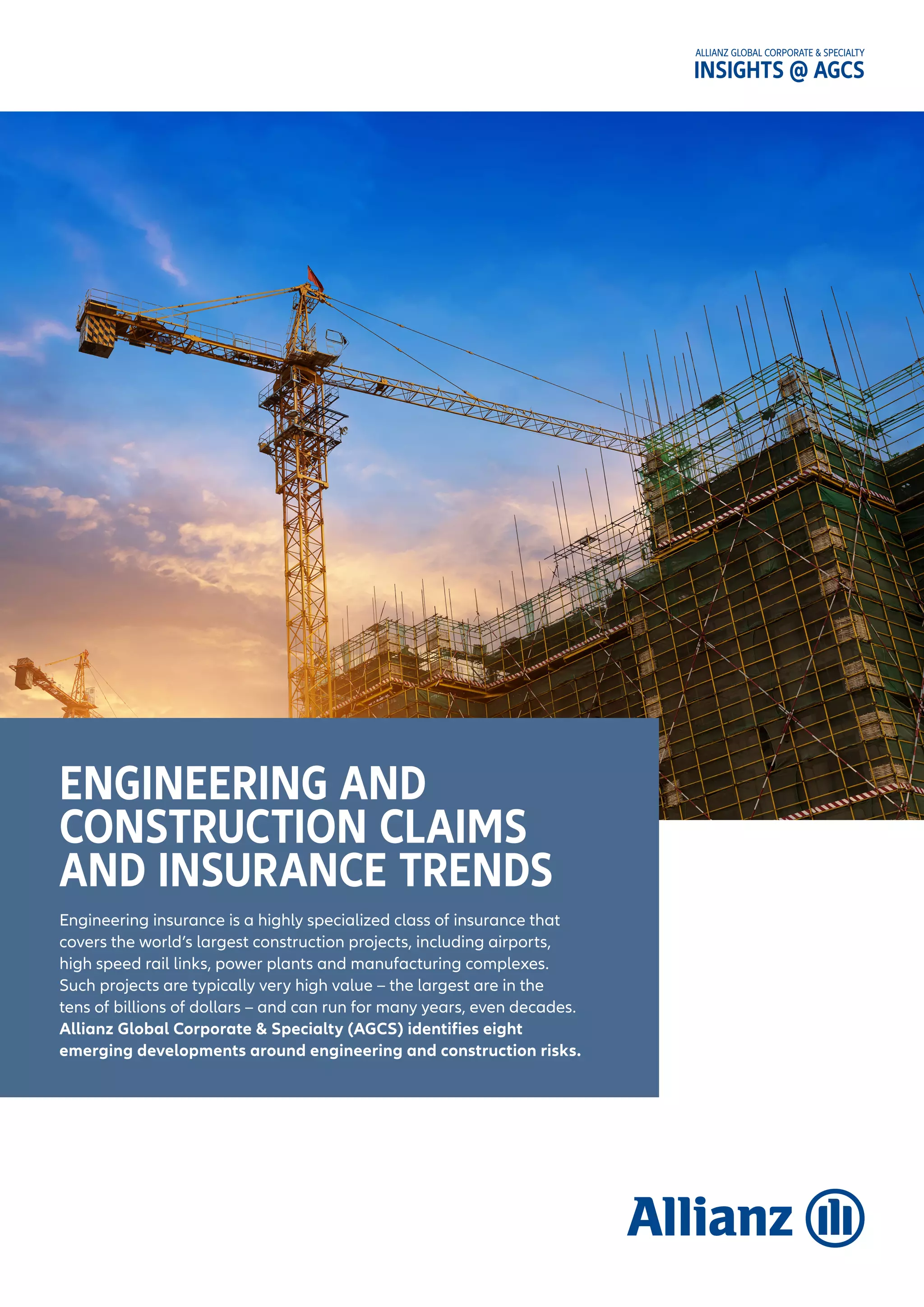Allianz Global Corporate & Specialty's insights on engineering insurance highlight the increasing complexities and values in large construction projects, which significantly influence the frequency and severity of insurance claims. Key issues include rising claims due to defective products and quality control failures, as well as the significant impact of fire and natural disasters. The document also discusses the growing relevance of business interruption claims and the challenges posed by political risks and supply chain complexities in today's engineering landscape.





